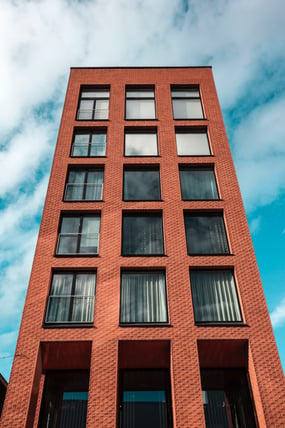One of the most important things to keep an eye on during construction is drainage. That’s because having proper drainage can affect a home both during the building process and long after a home has been completed. Everything from the type of soil the property sits on, to the slope of the site, to gutters affect drainage. Below we’ll outline some of the biggest things to look for when building to help avoid drainage problems.
Soil Type
Soils tend to be either sand, silt, or clay, and their particle size ranges across several millimetres, making a big difference in terms of how conducive they are to good drainage. Generally speaking, granular soils like sand are best as they drain well and have a high weight bearing capacity, making them safer to build on than other soil types. Silt is finer than sand and tends to retain water due to its smaller particles making it less conducive to proper drainage. What’s even worse than this is clay soil. Soils high in clay are generally unstable to build on from a drainage standpoint as they tend to hold a lot of water. Many types of clay soil can also expand when wet or when frozen, potentially severely damaging a foundation. If your site has a great deal of clay in its soil, it is a good idea to backfill it with more granular soils. It is also wise to consult a structural engineer when building in a clay-heavy region. Loam is also worth mentioning because it is a combination of clay, sand, and silt, resulting in an easy to work with soil that has both decent drainage and good air flow qualities, although a granular, sandier soil is still a better choice for overall drainage.
Slope
Building on steep slopes has numerous challenges, the biggest of which tend to be drainage and the threat of erosion. Homes built on steep slopes require retaining walls and specially engineered foundations. A structural engineer is a must for these types of projects. Another thing to keep in mind in terms of drainage is where the home will sit in relation to the sloped site. For example, if the home will be on the lower end of a sloped site, careful considerations need to be made to ensure that any accumulated water has pathways where the run-off can go. Knowing where the municipal water source for the home is located is also important, as different methods of pumps will need to be used depending on whether the water is coming from the top of the hill or the bottom. The climate is also an important drainage consideration when building on a slope. Areas that get a lot of rain or snow can be even more vulnerable to erosion and water build up.
Gutters
During construction, gutters need to be properly installed on a home to ensure that water runs off away from the home, and at the appropriate angle. Furthermore, the gutters must lead the water far enough away from the home so as not to cause pooling around the property. They can be incorporated into the site’s landscaping or directed toward gravel or areas with stones to ensure even better flow away from the home. If construction is occurring during winter or spring when there is generally more precipitation, gutters also need to be routinely checked for blockages or construction debris.
Other Considerations
A few other things to consider in terms of drainage during construction are things that are already on or around the site. For example, mature trees with large roots that come up toward the surface of the ground can be problematic as they could destroy pipes over time. Another thing to keep an eye on is too much soil buildup on the site during construction as it can retain water and cause problems deeper beneath the topsoil. And finally, if a neighboring property adjacent to the site slopes toward your lot from a higher elevation, this can cause problems. It is wise to deal with this issue early on by paying attention to the flow of water during a rainstorm and making plans to either divert it, build drains, or incorporate landscaping onto the site to help with drainage.

Recent Posts
- Spec Home Loans: Complete Guide to Construction Financing for Builders
- Spec Construction Loans: A Spec Line of Credit Is Worth the Paperwork
- Spec Homes and Pre-Sale Homes: Relative Benefits for a Spec Builder
- Spec Construction Success: Insights for the Investor Builder
- How Is a Spec House Different From Other Kinds of House Construction?
